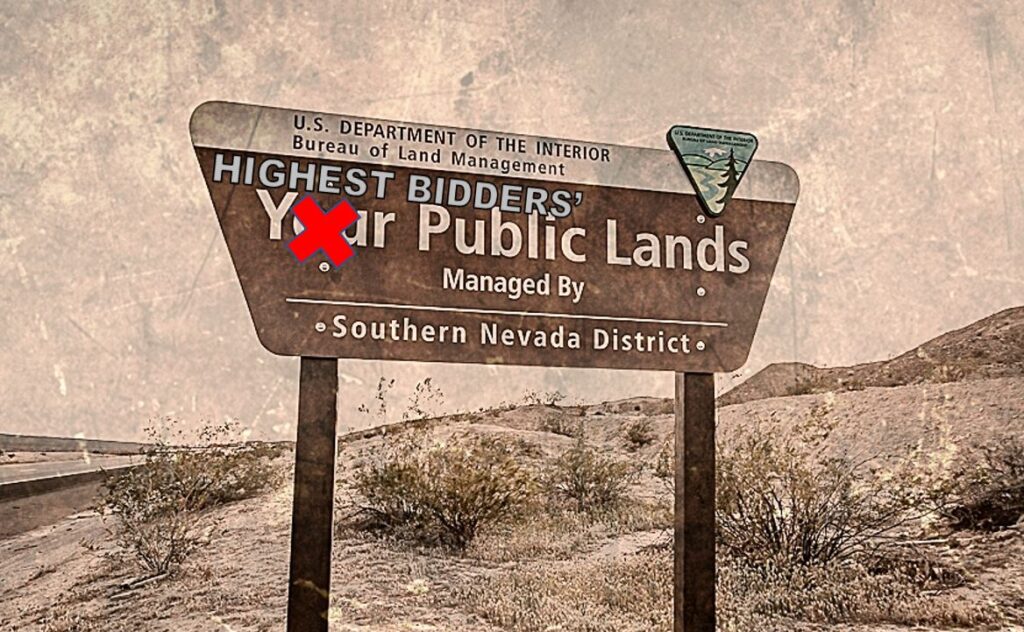Cat Urbigkit: In Push For Conservation, Bureau Of Land Management Usurps Congress
Cat Urbigkit writes: “Though perhaps well-intended, the proposed rules are staggeringly riddled with problematic language that will guarantee that federal courts will be overburdened with legal challenges. … What a terrible way to manage public resources.”
Cat Urbigkit
Cowboy State Daily
The Bureau of Land Management manages 35 million acres as National Conservation Lands.
The agency says it manages these lands, “For the benefit of current and future generations, supporting conservation as a part of the BLM’s multiple-use and sustained yield mission.
“This means respecting the ties that native and traditional communities have to public lands, as well as being welcoming of diverse interests and uses.”
These national conservation areas and similarly designated lands (wild and scenic rivers, wilderness areas, national and historic tails, national monuments) are designated for conservation by Congress and the president of the United States — not the BLM. The agency has no such authority.
But the BLM’s proposed Conservation and Landscape Health rules make an end-run around Congress and the president by attempting to use rulemaking to grant the agency authority to define what constitutes “conservation” and to determine what public lands will be subject to conservation, as well as issue conservation leases that can be used to exclude other uses.
No federal law grants the BLM such authority.
The 37-page draft rules create an entirely new management mission for the agency, including 131 new mandates through the use of actionable language (“must” is used 65 times, “require” is used 23 times and “shall” is used 43 times), providing 131 new pathways for the agency to be sued for failing to adhere to its mandates if the rule is finalized.
But here’s the thing: The BLM’s “multiple use and sustained yield” mandate comes directly from the Federal Land Policy and Management Act of 1976. In enacting FLPMA, Congress specifically defined “sustained yield” as “the achievement and maintenance in perpetuity of a high-level annual or regular periodic output of the various renewable resources of the public lands consistent with multiple use.”
Congress did not use the word “conservation” in setting forth how public lands were to be managed. They were to be managed for “multiple use and sustained yield unless otherwise specified by law.”
It’s up to Congress to decide which lands are to be managed for conservation.
The BLM uses the proposed rules to claim that sustained yield “relies on healthy landscapes and resilient ecosystems,” and therefore the rule is created “to promote the use of conservation to ensure ecosystem resilience.”
So now public lands are to be managed under the principle of “ecosystem resilience,” according to the agency.

It’s stunning to read how the BLM completely eliminated parts of its legal mandate in its proposed rules. Congress explicitly states how public lands are to be managed (I’ve highlighted the provisions of the federal law that the BLM ignored in developing its rule) as shown on the left side of this graphic.
The right side of the graphic is the language of the proposed rule.
Not only did BLM ignore significant components of the law under which it operates, the agency added some new requirements (as highlighted). Some, but not all, of these additions are taken from federal law, but again with other provisions eliminated.
What’s wrong with a federal policy requiring ecosystem resilience? Instead of it being one consideration, the rules would make this concept BLM’s top priority in approving uses on public lands. The BLM’s objective in the rule is to “promote conservation by protecting and restoring ecosystem resilience and intact landscapes.”
Interestingly, the rule doesn’t attempt to define “ecosystem,” but it does define an “intact landscape” as “an unfragmented ecosystem that is free of local conditions that could permanently or significantly disrupt, impair or degrade the landscape’s structure or ecosystem resilience, and that is large enough to maintain native biological diversity, including viable populations of wide-ranging species.”
It’s worth noting that the federal law authorizing BLM management of public lands does not mention “native biological diversity” or “viable populations” of “wide-ranging species,” but does mention providing food and habitat for fish, wildlife and domestic animals as well as providing for outdoor recreation and human occupancy and use, concepts missing from the BLM rules.
Continue reading here
Subscribe to RANGE magazine
Call 1-800-RANGE-4-U
You may also like
-
Electric Vehicles: A pipe dream for tyrants
-
Fed plan would kill 500,000 barred owls to “recover” spotted owls
-
BLM resource management plans stymie Western states’ energy development
-
Omnibus bill provision would “unleash” electronic tracking on nation’s cattle
-
Arizona rancher sues to stop million-acre national monument


